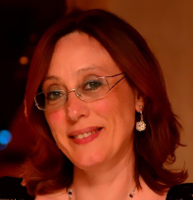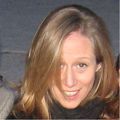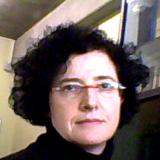Studying at the University of Verona
Here you can find information on the organisational aspects of the Programme, lecture timetables, learning activities and useful contact details for your time at the University, from enrolment to graduation.
Academic calendar
The academic calendar shows the deadlines and scheduled events that are relevant to students, teaching and technical-administrative staff of the University. Public holidays and University closures are also indicated. The academic year normally begins on 1 October each year and ends on 30 September of the following year.
Course calendar
The Academic Calendar sets out the degree programme lecture and exam timetables, as well as the relevant university closure dates..
| Period | From | To |
|---|---|---|
| 1° Semestre | Oct 1, 2023 | Jan 31, 2024 |
| 2° Semestre | Mar 1, 2024 | Jun 30, 2024 |
Exam calendar
To view all the exam sessions available, please use the Exam dashboard on ESSE3. If you forgot your login details or have problems logging in, please contact the relevant IT HelpDesk, or check the login details recovery web page.
Should you have any doubts or questions, please check the Enrollment FAQs
Academic staff
 denise.lovison@univr.it
denise.lovison@univr.it
Study Plan
The Study Plan includes all modules, teaching and learning activities that each student will need to undertake during their time at the University.
Please select your Study Plan based on your enrollment year.
1° Year
| Modules | Credits | TAF | SSD |
|---|
2° Year It will be activated in the A.Y. 2024/2025
| Modules | Credits | TAF | SSD |
|---|
3° Year It will be activated in the A.Y. 2025/2026
| Modules | Credits | TAF | SSD |
|---|
4° Year It will be activated in the A.Y. 2026/2027
| Modules | Credits | TAF | SSD |
|---|
5° Year It will be activated in the A.Y. 2027/2028
| Modules | Credits | TAF | SSD |
|---|
| Modules | Credits | TAF | SSD |
|---|
| Modules | Credits | TAF | SSD |
|---|
| Modules | Credits | TAF | SSD |
|---|
| Modules | Credits | TAF | SSD |
|---|
| Modules | Credits | TAF | SSD |
|---|
| Modules | Credits | TAF | SSD |
|---|
Legend | Type of training activity (TTA)
TAF (Type of Educational Activity) All courses and activities are classified into different types of educational activities, indicated by a letter.
Physics with elements of mathematics (2023/2024)
Teaching code
4S011736
Credits
9
Language
Italian
Scientific Disciplinary Sector (SSD)
FIS/07 - APPLIED PHYSICS
Courses Single
Not Authorized
The teaching is organized as follows:
Fisica
Matematica
Learning objectives
The course aims to provide a knowledge of the basic elements of mathematics necessary for the study of science and to introduce the student to the knowledge of the main physical laws and their applications, particularly in the biomedical field.
Objectives Mathematics Unit
The teaching is aimed at the acquisition of knowledge and understanding of fundamental tools for mathematical analysis and geometry, at the understanding and elaboration of application models based on mathematical structures.
Applying the skills acquired, the student must be able to interpret and solve equations related to the mathematical modeling of natural phenomena.
Objectives Unit of PHYSICS
The teaching is aimed at acquiring knowledge and understanding the main theoretical models of physics and the hypotheses on which they are based; the ability to understand and apply these models to real cases, evaluating the reliability of the results obtained in connection with the measurement errors and the limits of validity of the models themselves.
The student will have to acquire a correct use of the procedures of abstraction, of formalization of the quantitative language, of understanding of the experimental method. At the end of the course the student will have to know the main laws of Physics, in particular in the fields of the mechanics of the material point, of the rigid body and of the fluids. He must have learned the basics of electrostatics, magnetism and electrodynamics.
Prerequisites and basic notions
Knowledge of mathematics and physics at high school level.
Program
MATHEMATICS:
- Vectors and scalars: vectorial calculus and trigonometry
- Elements of analytical geometry
- Equations and inequations, elementary and function composition
- Limits, derivatives and rules of derivation (a brief note on differential equations)
- Study of functions
- Integral calculus and applications
- Normal or Gaussian distribution. Probability density function
- Elements of descriptive statistics: mean, median, mode, variance, standard deviation, correlation coefficient, covariance, regression line
PHYSICS:
- Mechanics
Position, displacement, various dimensional motion, rectilinear motion. Average speed and instantaneous speed.
Acceleration, rectilinear uniformly accelerated motion . Moto two-dimensional radial acceleration, tangential acceleration. Uniform circular motion.
Motion of bodies. Projectile motion. Laws of Motion (I, II, III). Momentum. Inertial mass. Weight.
Inclined smooth. Pulley. Friction forces. Harmonic motion. Elastic force. Work of a force. Kinetic energy. Kinetic energy theorem. Conservative forces. Potential energy.
Gravitational potential energy. Theorem of mechanical energy. Exercises
Conservation of momentum. Elastic collisions, inelastic, perfectly inelastic collisions. Law of universal gravitation. Power.
Rotating motion of rigid bodies (overview) and moment of a force.
Levers of first, second and third types, levers of the human body.
- Fluidynamics
Pressure, density, specific gravity, the law of Stevin, hydraulic press, barometer Torricelli tube manometer open, Archimedes' principle.
Ideal fluid, stationary bike, motorcycle not turbulent flow. Continuity equation. Venturi’ theorem. Theorem of Torricelli (tank). Applications.
Stokes force. Friction in fluids.
Viscous fluids. Viscosity, resistance of a conduit. Poiseuille formula.
- Thermodynamics
Thermal expansion of solids and liquids (linear, surface, volume). Contact thermal, thermal equilibrium, zero law of thermodynamics, gas thermometers, absolute temperature. Perfect gas. Ideal gas law. Heat, internal energy, mechanical equivalent of heat, heat capacity, specific heat, latent heat.
Convection, conduction, radiation.
The law of thermodynamics. Work and heat in thermodynamic processes. The application of the principle. Cyclic transformations, free expansion, adiabatic transformations, isobaric, isochoric, isothermal.
The principle of thermodynamics (of Kelvin-Planck, Clausius, Kelvin). Heat engine, thermal efficiency. Exercises
Refrigerator, coefficient of performance.
- Electrology – electromagnetism
Electric charges. Law of conservation of charge. Insulators, conductors, electroscope. Coulomb force, electric field. Potential energy, the electrostatic potential.
Lines and equipotential surfaces. Electrical capacity. Electricity generator. Electricity. Ohm's law, resistance and resistivity. Electrical power, Joule effect. AC. DC circuits. Series and parallel resistors.
Magnetic poles, magnetic field strength. Force of electrical wire. Charge in a magnetic field, Lorentz force, Larmor radius. Magnetic field generated by an electrical wire. Field in a solenoid.
Forces acting between wires carrying current. Electromagnetic waves (generation, spectrum, wavelengths).
- Optics
Principles of geometrical optics.
Reflection, laws of reflection, flat mirror. Concave spherical mirror, the law of conjugate points, fire objects, fire images, construction of images. Real images, virtual images. Linear magnification. Concave spherical mirrors. Refraction, laws of refraction, refractive index absolute and relative. Diopter spherical diopter plan, examples.
Thin converging lenses, thin lenses divergent. Law of manufacturers of lenses. Construction of the images. Human eye: myopia and hyperopia.
Bibliography
Didactic methods
Lessons take place face to face. During the lessons the theoretical topics are dealt with and immediately afterwards many exercises are carried out for the application of theoretical concepts and for preparation for the final exam.
Learning assessment procedures
Written exam, including both modules, with open question exercises. Indicatively there will be two Physics exercises for each Mathematics exercise. Duration 2 hours maximum. No books or notes are allowed. Bring calculator and pen and ID. The sheets will be distributed by the teacher. Write your name, surname and serial number on all the sheets delivered. It is possible to make a draft. All the sheets (even the draft) must be returned at the end of the exam. The text written in pencil will not be considered in the evaluation. The exercises can be carried out in a different order from that indicated in the text but the number of the exercise to which it refers must be clearly indicated before the exercise. Two or more different solutions of the same exercise are not allowed.
Evaluation criteria
The correctness of the procedure adopted by the student to solve the exercises and the use of units of measurement will be taken into account. Alternative solutions are welcome, as long as they are correct. Calculation errors that lead to solutions that are incompatible with the problem are considered serious. The clarity in the mathematical passages and in the order of the paper will also be taken into account.
Criteria for the composition of the final grade
The final grade will be given by the weighted average for the CFU credits of the grades obtained in the Physics and Mathematics sections separately.
Exam language
Italiano
Type D and Type F activities
Modules not yet included
Career prospects
Module/Programme news
News for students
There you will find information, resources and services useful during your time at the University (Student’s exam record, your study plan on ESSE3, Distance Learning courses, university email account, office forms, administrative procedures, etc.). You can log into MyUnivr with your GIA login details: only in this way will you be able to receive notification of all the notices from your teachers and your secretariat via email and soon also via the Univr app.

 045-8027284
045-8027284








